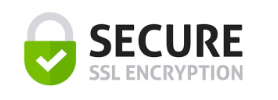Founded in Denmark. We respect your privacy.
Join a worldwide community of language learners
Why Do We Have So Many Languages—and Are We Losing Them Faster Than Ever?
Last updated on
Have you ever wondered why there are so many distinct languages across the globe, and what the future holds for them? Exploring these questions not only unpacks the diversity of human history but also shines a light on one of the biggest linguistic shifts unfolding today. By the end of this article, we’ll reveal a striking statistic about language loss that may change how you think about learning and preserving languages.
While thousands of languages are spoken worldwide, their distribution and survival are anything but evenly spread. The sheer diversity springs from a combination of migration, isolation, culture, and time. For example, ancient communities that settled in secluded regions gradually developed independent dialects and vocabularies, which morphed into full-fledged languages. Geographic barriers—mountains, oceans, and deserts—have historically nudged groups into linguistic isolation, fostering unique ways of speaking and thinking. Modern linguists estimate that there are over 7,000 languages alive today, though only a fraction are widely spoken. In fact, just 23 languages account for half of the global population’s first-language speakers (Statista).
The story of language evolution is dynamic. Trade, conquest, colonization, and globalization have shaped linguistic landscapes. When populations intermingle, languages often borrow from each other and sometimes blend entirely—as seen in the development of TagLish or other mixed languages. However, dominant languages—like English, Mandarin, or Spanish—tend to outpace minority ones, especially in an interconnected world where economic and digital incentives play a role in language preference.
So, are all these languages here to stay? Research shows that we’re actually losing languages at an alarming rate. According to recent studies, nearly 40% of today’s languages are considered endangered. Many lack written forms, making them especially vulnerable as older generations pass away and younger people shift toward majority languages for education and work.
This isn’t just a matter of nostalgia—every lost language means the disappearance of unique knowledge, cultural identity, and even ways of perceiving the world. For learners and educators, this underlines the need for strategies that celebrate and support linguistic diversity. Engaging in real conversations with speakers of less dominant languages, or using tools designed to nurture oral skills in a range of dialects—like those found in French or Zulu—can play a part in preserving these vital threads of human heritage.
Curious about just how quickly the world’s languages are disappearing? Here’s the big reveal: experts project that a language dies every two weeks, and by the end of this century, at least half of our current languages may no longer exist (National Geographic). This rate of decline is faster than at any previous point in history. As learners, educators, and global citizens, the responsibility—and opportunity—to support linguistic diversity has never been greater.
Talk Your Way
to Fluency

Talkio is the ultimate language training app that uses AI technology to help you improve your oral language skills!
Try Talkio


